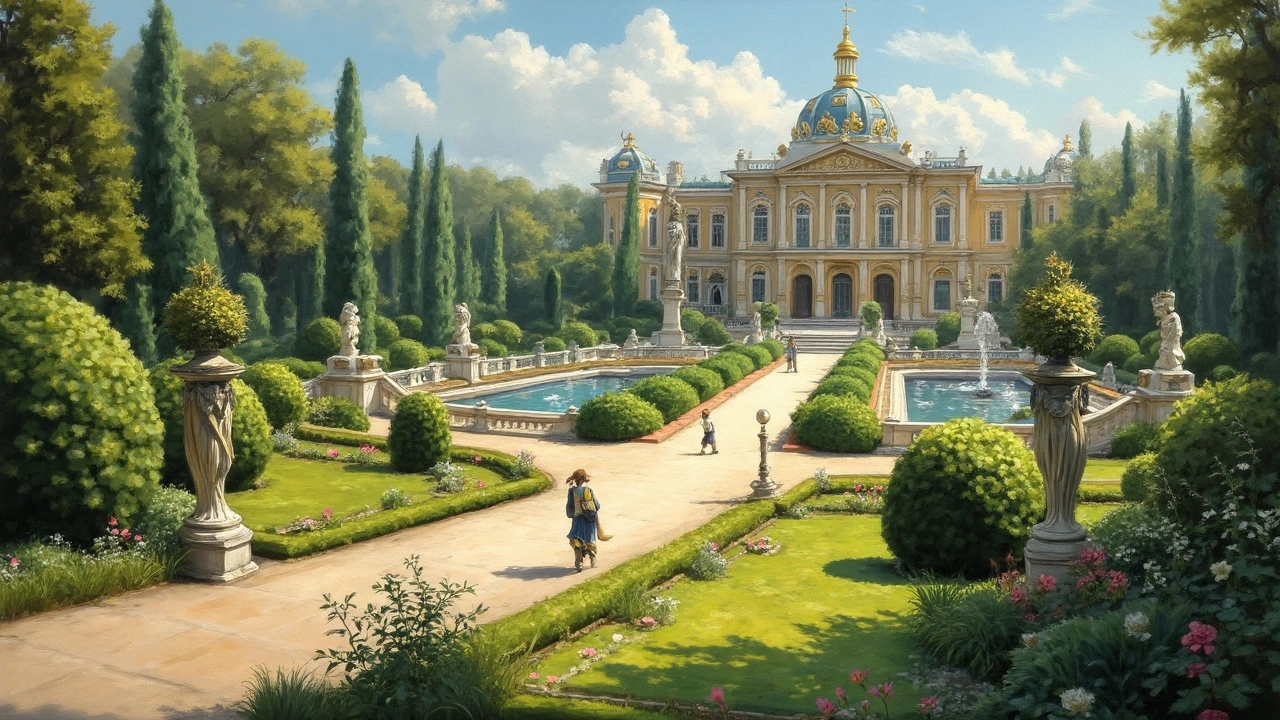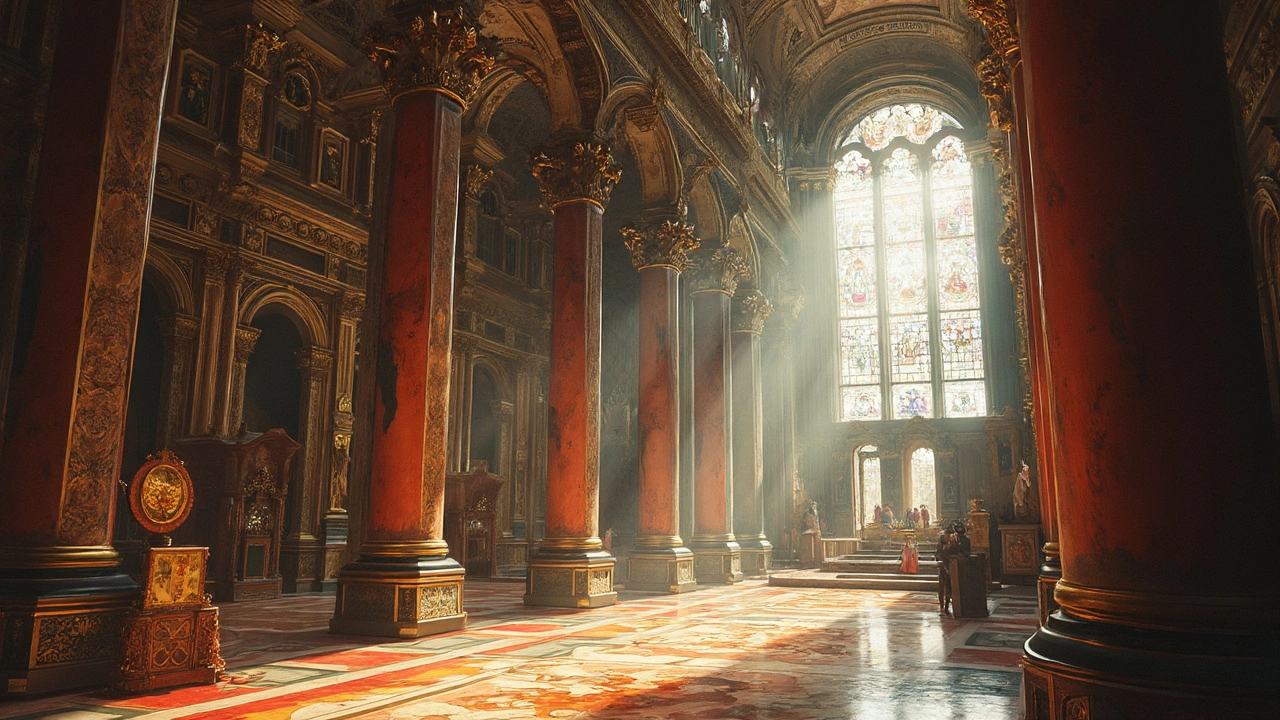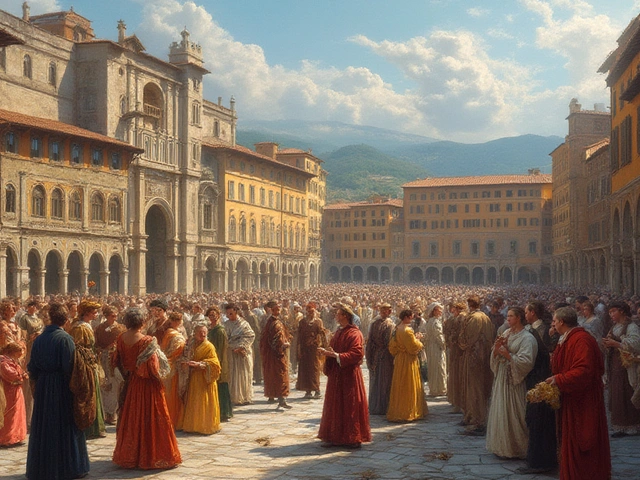Ever walked into a building and felt like you'd stepped into a dramatic play? That's exactly what Baroque architecture aims to achieve. It's a style that emerged in the 17th century, filled with bold shapes, swirling curves, and a bit of theatrical flair. But how did all this come about? Well, it started as a way for the Catholic Church to impress and awe its followers during the Counter-Reformation.
Baroque architecture wasn't just about looking fancy—it served a bigger purpose. Churches and palaces weren’t just religious sites or homes, they were tools of persuasion. The Church used this ornate style to tell stories and evoke emotions. It pulled from the drama of Renaissance art but added an extra layer of emotion.
- Roots of Baroque Architecture
- Key Features of Baroque Design
- Famous Baroque Structures
- Bringing Baroque into Modern Living
Roots of Baroque Architecture
So, where did this lively style begin? The roots of Baroque architecture can be traced back to late 16th-century Italy. At the time, the Catholic Church was looking for a way to respond to the Protestant Reformation, and, believe it or not, architecture played a big role. That's when Baroque came into the picture, aiming to create buildings that were as emotionally moving as possible.
The Church commissioned architects to build stunning churches and cathedrals that didn't just tell you what to believe but made you feel the divine. It was kind of the Church's way of saying, "Look, this is how amazing and powerful our faith is." That's why you see a lot of Baroque architecture in Italy, Belgium, and France, where the Catholic Church held a big influence.
What really set Baroque apart from the styles that came before was how it embraced drama and movement. Structures were designed to keep your eyes moving, to keep you from getting bored, really. Architects used curves, domes, and lavish jewelry-like decorations. It's almost like they wanted buildings to feel alive.
One significant name in the Baroque world is Gian Lorenzo Bernini. He's kind of a big deal because he took what Michelangelo started with the Renaissance and added even more flair. His design of St. Peter’s Basilica in Vatican City is a textbook example of what Baroque can do when it's firing on all cylinders.
If you think Baroque is just for European history books, think again! Its influences have seeped into different parts of the world, showing up in everything from Latin American churches to modern-day homes. All these elements combined make Baroque not just a historical style but a lasting one that continues to inspire architects and designers today.
Key Features of Baroque Design
When it comes to Baroque architecture, there's a lot that catches the eye. At its core, it's about the 'wow' factor. Think bold, exaggerated forms, loaded with details that get more intricate the closer you look. You won't find anything minimalist here.
First off, curves and swirling lines are pretty much everywhere. Baroque architects loved to use curves to break away from the straight lines of previous eras. Walls ripple, columns twist, and ceilings bend elegantly. It's almost like the building itself is in motion.
Then there's the play with light and shadow. Baroque buildings often feature large windows to bring in natural light, coupled with clever use of shadows to add depth and contrast. This isn't just about utility; it's about drama. The style loves to keep things dynamic and visually engaging.
Baroque architecture is also famous for its rich ornamentation. Look at the facades and interiors, and you'll find sculptures, statues, and detailed carvings. These elements serve as much more than decoration. They often have religious or symbolic meanings, telling stories to anyone willing to take a closer look.
Don’t forget about the grandiose scale. Baroque buildings are big and bold. High ceilings, vast halls, and oversized domes are common, designed to make you feel like you've stepped into a different world—a place of power and importance.
Finally, the integration of different artistic disciplines is a hallmark of this style. Paintings, sculptures, and architecture work together harmoniously to create a unified experience. This mix of arts is what makes the Baroque style so immersive and unforgettable.

Famous Baroque Structures
Dive into the world of Baroque architecture, and you'll stumble upon some jaw-dropping buildings that show just how glamorous and detailed this style can be. Let's walk through a few of these iconic structures that truly showcase this design at its peak.
The Palace of Versailles in France is probably the first place that comes to mind. Originally just a humble hunting lodge, King Louis XIV transformed it into a sprawling symbol of absolute monarchy and Baroque splendor. With its extensive gardens, dazzling Hall of Mirrors, and opulent intricate details, it's no wonder it's a UNESCO World Heritage site.
Jump over to Italy, and St. Peter's Basilica in Vatican City can't be missed. Designed by greats like Michelangelo and Bernini, this church is the heart of Catholicism and a textbook example of Baroque art and architecture. Its enormous dome, lavish interiors, and grandeur make it a phenomenal masterpiece.
Meanwhile, in Spain, you find the Royal Palace of Madrid. It's got that classic Baroque vibe, blended with elements of Rococo and early Neoclassicism. Even though the Spanish royal family no longer lives there, it's still used for official events, and you can visit it to soak in the history and lavish decor.
Lastly, if you check out Prague, don't miss St. Nicholas Church. This gem stands in Lesser Town Square and is a beautiful example of High Baroque in Central Europe. Its lavish ceiling frescoes and grand organ, once played by Mozart, are must-sees for art lovers.
Each of these structures is more than a pretty face. They're cultural icons and historical treasures, offering glimpses into different aspects of 17th- and 18th-century life. The history and design of these buildings can inspire awe and admiration, proving the lasting impact of Baroque art.
Bringing Baroque into Modern Living
Want to add a touch of drama to your space without going full-on castle mode? Transforming your home with Baroque architecture elements isn't as daunting as it sounds. In fact, you can sprinkle in some of these bold features while keeping things modern.
First things first, think about textures. Baroque is all about layering different materials. A velvet couch or brocade pillows can instantly introduce that luxurious feel. Mix these richer fabrics with everyday materials like wood or metal to keep things balanced.
Next, let's talk about color. Baroque style loves deep, rich tones—think reds, golds, and creams. You don't have to paint your whole room scarlet; even a statement wall or some gilded accessories can do the trick.
Now, on to decorations. You might not have room for a huge statue, but small art pieces or ornate mirrors can add that Baroque flair. Look for frames with intricate carvings or even paintings that mimic the style's dramatic scenes.
- Use bold lighting. Chandeliers are a classic choice, but modern versions can also work.
- Introduce curves through furniture. Chairs or tables with curved lines nod to the Baroque without going overboard.
- Don't forget the details. Small touches like lush curtains or patterned rugs can bring a unified look.
If you're a bit of a numbers nerd, consider this: adding unique architectural styles like Baroque can increase perceived home value, appealing to those with a taste for the finer, more artistic things in life.




